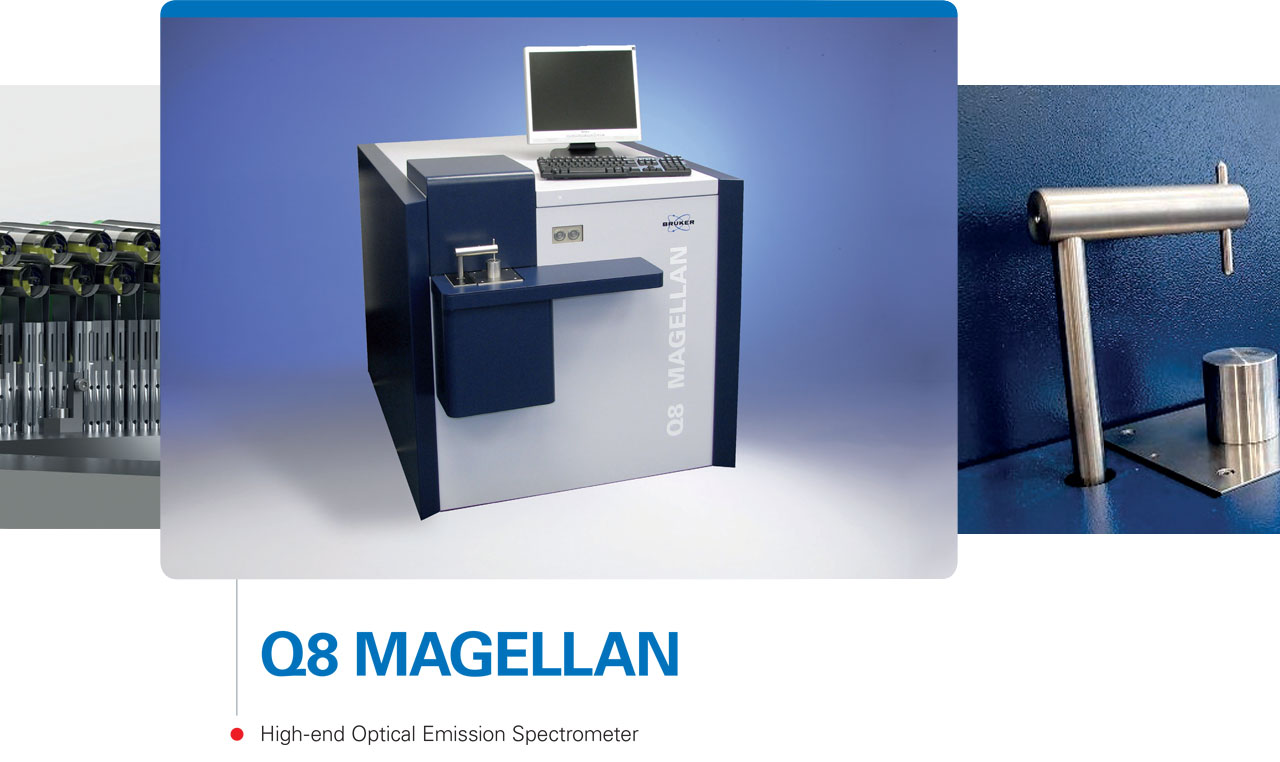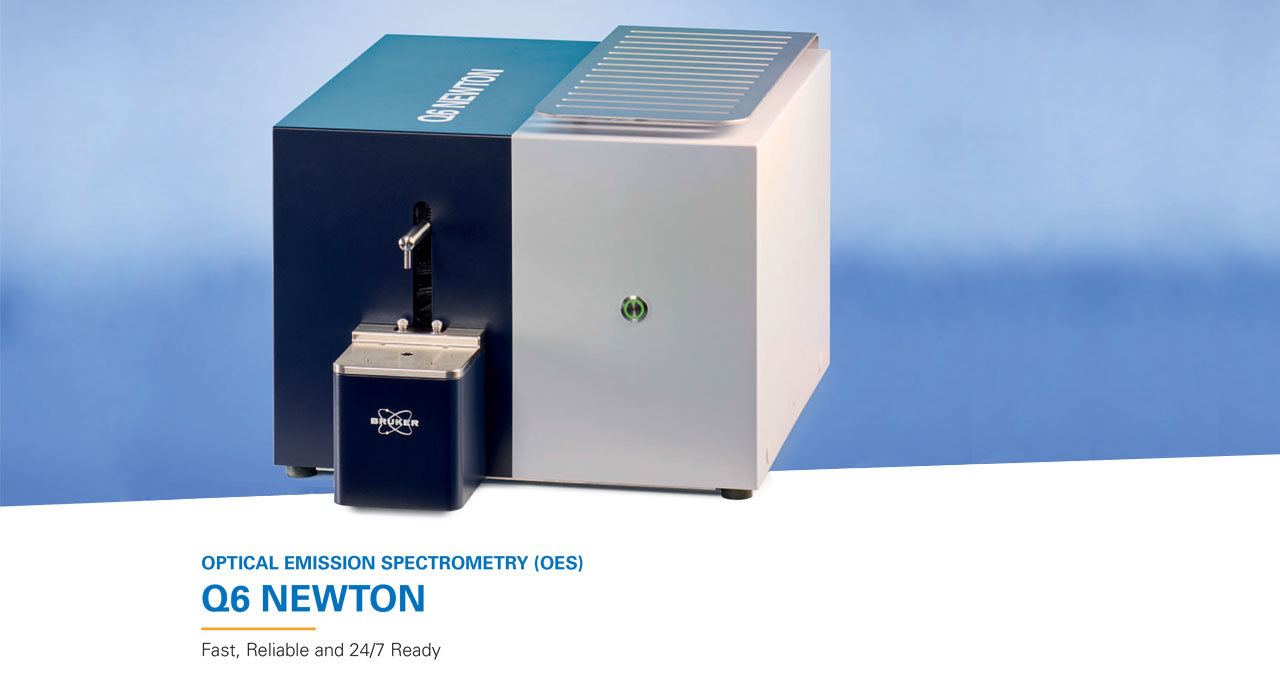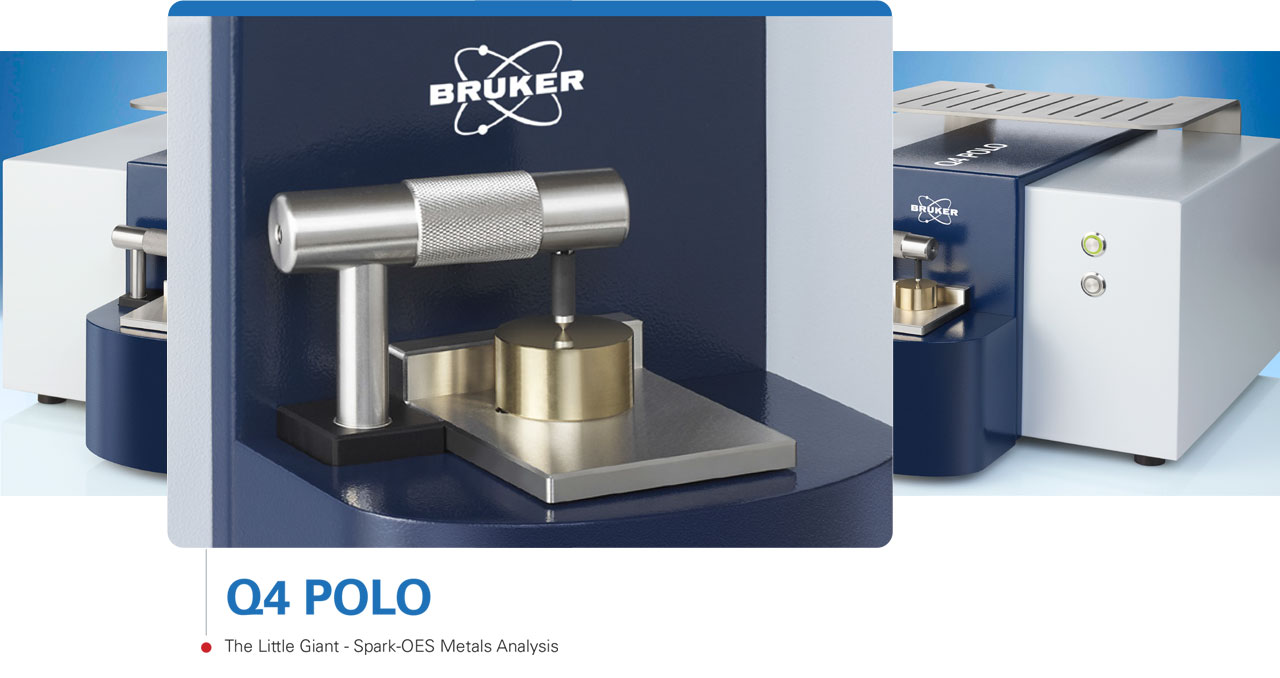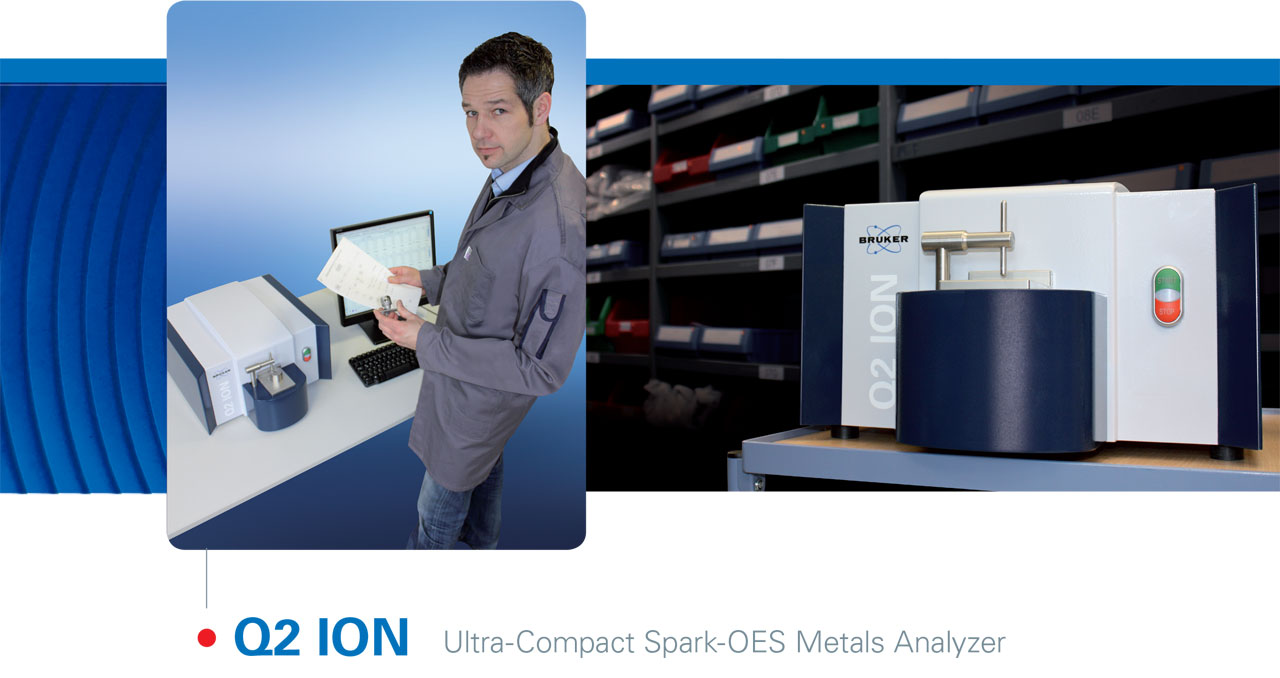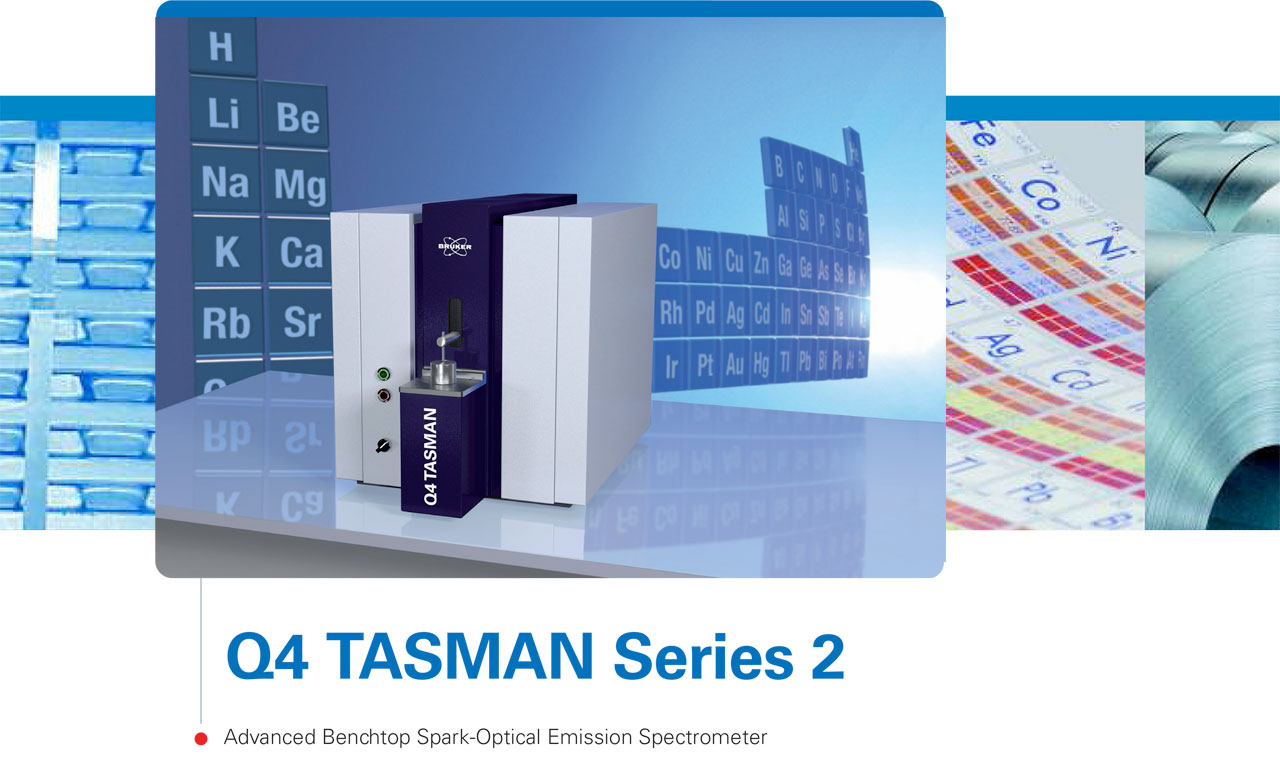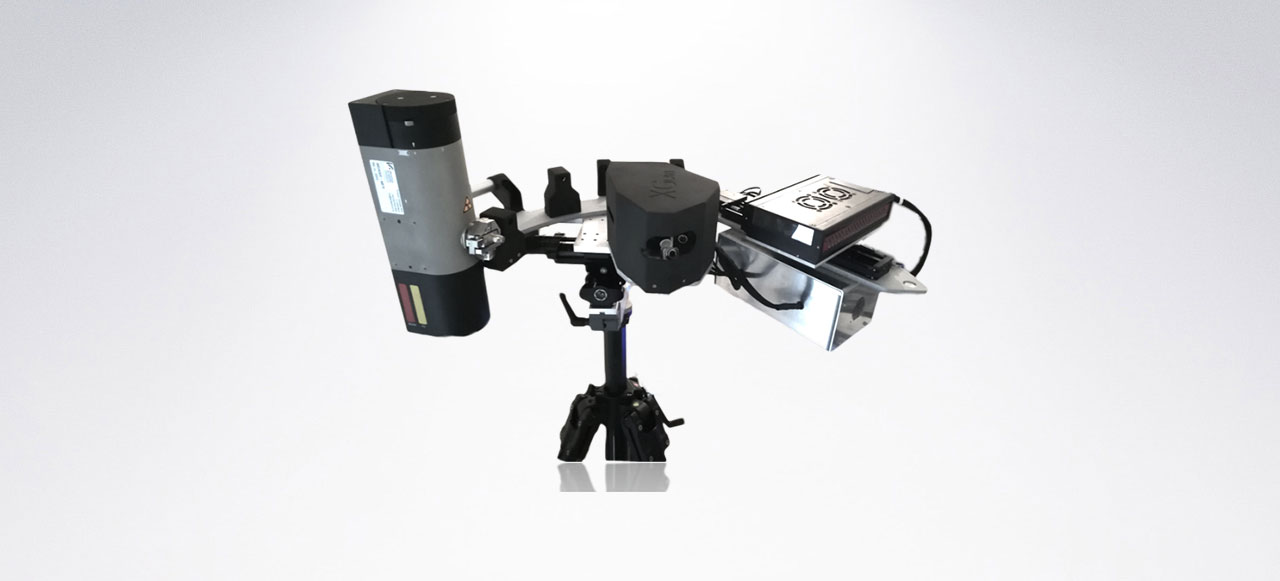Q8 Magellan
The Evolution of Perfection
Engineered for ultimate spark spectrometry
The genes are right: Q8 MAGELLAN is a well reputed, true high-end spark spectrometer for elemental analysis! It has taken the lead in many applications, being the only vacuum-spectrometer featuring new-generation photomultipliers, digital plasma generator, unlimited single-spark and time resolution, and a heavy duty, low-maintenance spark stand with co-axial argon flow. All ingredients to define the perfect metals analyzer.
The Q8 MAGELLAN is the continuation of this family line and marks a (r)evolutionary milestone in optical emission spectroscopy.
Next step to perfection
Q8 MAGELLAN now offers - besides well established technologies - additional innovations and benefits:
- improved optical properties
- enhanced analytical capabilities
- extended maintenance intervals
- one-button operation for quick and easy handling
- new instrument design
- simplified servicing
The Q8 MAGELLAN is the perfect symbiosis of accepted and new, tradition and innovation.
Q6 NEWTON
Built on 300 years of innovation!
Q6 NEWTON
Over 300 years ago, Sir Isaac Newton published research into the properties of light. This included the discovery that light can be divided into its constituent wavelengths, a process also fundamental to Optical Emission Spectrometry (OES).
Nowadays, combined with modern technology the Q6 NEWTON offers a fast and reliable 24/7 industrial solution from the foundry floor to the metallurgical laboratory. Bruker is intimately familiar with metal applications, offers top-of-the-line instrumentation, and a global support network.
We haven't changed science like Isaac Newton, but with the Q6 NEWTON we make a metallurgist's life better, faster and easier than ever before.
Q4 POLO
Q4 POLO - Little Space, Mighty Performance
In history, it is often the small things or individuals that change the world – people like Marco Polo. He blazed completely new trails, covered huge distances and opened up new possibilities for the world.
In the development of our Q4 POLO, we too have opened up new dimensions, perfected and thought through every last detail. The result is a spark spectrometer that is second to none.
No other system offers better analytical performance in such a small and highly functional package. From very light lithium (Li) to heavy bismuth (Bi), the small Q4 POLO guarantees enormous performance and applications that were previously unthinkable in the compact instrument class.
Q2 ION
Bruker Elemental´s all-new spark spectrometer Q2 ION elevates metals analysis to new levels of simplicity and ease-of-use. Today Q2 ION is the smallest and lightest ultra-compact spark emission spectrometer for metals analysis available. It is a versatile multi-matrix system for comprehensive incoming material inspection and quality assurance of metal alloys. Its affordable price and low operational costs make it the ideal tool for small- and medium-size businesses.
Q2 ION analyzes all major alloying elements in applications such as ferrous alloys, aluminium, copper, and many more. It perfectly fits the requirements of foundries, metal processing plants, fabricators, quality control departments, warehouses, metal recyclers, and even inspection companies.
Q4 TASMAN Series 2
Q4 TASMAN Series 2 – Ready-to-Use Benchtop Metals Analyzer
Continuous Development
For thousands of years, metals and alloys have played a prominent role in the evolutionary history of humanity and have given names to entire epochs. Nowadays, our world is still made of metals and the metals evolution continues. There are more than 3,500 different grades of steel available with 60% developed in the last four years. New applications like energy storage, additive manufacturing, and biomedical devices continuously drive the development of new alloys.
To keep pace in business where profitability is a major concern, foundries and metal processing companies rely on fast, accurate elemental analysis. Measurements are required at numerous points in the process, from incoming materials to in-process testing to final quality inspection. Traceability is another critical consideration. At every step, managers must be able to document elements in every product, from primary to final form. And since time always counts, rapid analysis is vital on today’s fast-moving foundry floor.
For more than two decades, Bruker Optical Emission Spectrometry (OES) elemental analyzers have been applied by foundries and metal processors worldwide, exceeding the analytical requirements. Just as the development on the metals side progresses, Bruker continuously drives the improvement of innovative solutions that let you achieve your goals faster, more reliably, and more cost-effectively than before. The new Q4 TASMAN Series 2 is the latest result of our striving for perfection.
Xraman - Special Engineering
Xraman, our advanced prototype developed to achieve a perfect combination of complementary techniques XRF and Raman on the same spot in position ad size. This instrument has been engineered to be absolutely portable and to be able to work on site with standard atmospheric conditions.
HYDRA - Special Engineering
A new combined portable open beam XRF-XRD system for contemporary compositional and structural study of art objects. The point of measurement is exactly the same as a single excitation source is used while measurements are performed on two separate state of the art detectors.
Is an innovative portable spectrometer designed to performin-situ, fast and non-destructive combined elemental and chemical structural analyses, by the complementary EDXRF and XRD techniques.
In particular, the system has been developed specifically for cultural heritage application and it is a brand-new advanced prototype solution from the Bruker Engineering Special labs. The output information delivered by the instrument includes both XRF spectrum and XRD diffraction patterns from the same analysis point.
Hydra comes with a software for complete instrument control, XRF spectra and XRD diffractogram visualization and export in various formats.
M6 Jetstream
The M6 JETSTREAM expands the capabilities of micro-XRF to large and heavy samples in many fields of scientific research. Often, the size and fragility of such samples only allows horizontal positioning and measurements in top-down geometry. The flexibility of the M6 JETSTREAM opens up the possibility to create compositional overview images of samples ranging from fossils over geological samples to technical components. This allows measurements previously only possible at synchrotron facilities.
Micro-XRF on large samples (also called macro-XRF or MA-XRF) has become a decisive method for the analysis of paintings, geological samples, archeological artifacts and industrial components. The M6 JETSTREAM drives these analyses to the highest speed and accuracy. With its mobile wheelbase and adjustable frame, the M6 JETSTREAM can be used on-site instead of transporting the sample to the lab.
It can measure upright samples or horizontal surfaces with scannable area up to 800 x 600 mm². Dual detectors can be mounted in M6 Jetstream to help the user get a lot of information and improved scan speed.

